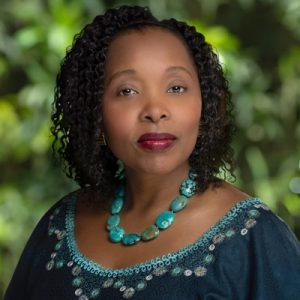
As 2023 is on track to become the hottest year on record, with extreme weather events impacting lives and livelihoods across the globe, the scientists’ final warning on climate change is as clear as it can be: act now or face an increasingly unlivable future.
Fortunately, scientists have solutions to prevent, or build our resilience to, the worst effects we could face.
Healthy agricultural and forested landscapes can deliver one-third of the climate solution—soil accounts for one-third of the global carbon stock and forests net-absorb 1.5 times more CO2 than the US emits annually. Crucially, they can do that while enhancing the biodiversity and soils that underpin sustainable food production.
Sustainably managed forests are also essential to transition towards a circular bioeconomy in which wood-based materials replace fossil fuels as a source of energy, packaging and construction. About half of the four billion hectares of forest on the planet are allocated as production forest, largely for wood and wood-related products, of which each of us consumes an average of 0.5 cubic meters of roundwood equivalent per year.
As the global population grows – and we make the needed move towards a bio-based economy – demand for these products will grow, too. So, we need to work out how to manage the planet’s production forests in ways that sustain yields whilst maintaining other ecosystem services and values.
However, an area the size of Iceland is still being deforested around the world every year and the planet is losing ten times as many hectares of fertile land annually. Food systems are a major part of the problem: they take up 40 percent of the planet’s land area and account for 80 percent of all deforestation and 70 percent of freshwater use.
Food systems and soils have historically been overlooked in climate summits, and their links with forests, agroforestry and trees neglected—until now. COP28, taking place in Dubai from 30 November to 12 December, will take a hard look at how the world produces food and forest commodities, and how land use can become part of the solution.
So what do decades worth of science and experience tell us about what works and what doesn’t, and how we can best harness nature, policies, markets, and technology for a climate-resilient future?
Healthy landscapes as a climate solution
To avert the worst effects of climate change, world leaders must recognize the benefits of restoring and conserving the world’s landscapes, ensuring that the production of agricultural and tree commodities does not continue at the expense of healthy soils and ecosystems.
The good news is that taking care of the planet serves both communities and bottom lines.
For instance, every dollar invested in restoring degraded land provides an estimated USD 7-30 return in economic benefits, including carbon sequestration, water quality, and food production—a win for countries and for businesses focused on long-term resilience, profitability, and growth.
The Center for International Forestry Research and World Agroforestry (CIFOR-ICRAF) has extensively documented the tangible difference integrated land management makes for people and the planet.
In the Democratic Republic of Congo, for example, our long-term engagement in Yangambi is producing invaluable lessons on how sustainably managed landscapes can drive local development and food security while bolstering the conservation of the planet’s second-largest tropical forest. Research, restoration and climate-smart agriculture are advancing forestry innovation, offering a blueprint for action across the Congo Basin and beyond.
We also know that restoring degraded land through agroforestry can reduce soil erosion by 50 percent, increase soil carbon by 21 percent and, if implemented on a large scale, can increase food security for 1.3 billion people.
The Land Finance Hub, a joint initiative with the UN Environment Programme, is connecting micro, small and medium enterprises worldwide with the finance and investments they need to take their agroforestry operations to the next level, greening supply chains from the ground up.
There are many more initiatives like this that we, together with partners, are moving forward.
CIFOR-ICRAF at COP28
At COP28, CIFOR-ICRAF will present evidence-based guidance and field-tested strategies to help decision-makers make good on their commitments and guide humanity toward a healthy future.
For example, we will feature Indonesia’s experience growing the market for sustainably-produced agricultural commodities; collaborating with the private sector; and sustainably managing mangrove ecosystems to the benefit of coastal communities.
Other side-events will lay out policy, financial and monitoring strategies to unlock the benefits of healthy soils; explain strategies for integrated land use management to balance competing interests over resources; and examine the environmental and livelihood potential of green tree commodities in Africa.
Finally, we will explore the role of data and new technologies in shaping sustainable, climate-smart food systems, and discuss how countries can prepare for their first climate transparency report, due December 2024.
A climate-resilient tomorrow
COP28 might be the last ever climate summit held under a 1.5°C scenario: that is, the possibility of limiting global temperature rises to 1.5°C above pre-industrial levels and avoiding irrevocable damage to our climate, ecosystems, and societies.
What’s clear though, is that we have the collective wisdom and power to avoid a point of no return. The world can drastically reduce agricultural emissions; halt deforestation; and bring millions of hectares of barren land back to health.
To do it, we’ll need the support and partnership of the private sector, which the planet is counting on to bring more than the current 10 percent of climate finance to nature-based solutions like forests and soils.
At CIFOR-ICRAF, we believe that nature-based solutions, robust natural-resource governance and social justice are essential to addressing the climate, biodiversity, and land crises. We also believe that policymakers have never been as well placed to make the right call: a wealth of data and experience show what works, where; new technologies open up prospects unthought of only a few years ago; and humankind has the broadest toolkit of options in history to do what has to be done.
As the world turns to COP28 for make-or-break climate policies, we urge decision-makers, private companies, and financial institutions to use this collective knowledge and skills to steer our common vessel to a safe port.
Éliane Ubalijoro is the CEO of CIFOR-ICRAF and director general of ICRAF. Robert Nasi is the chief operating officer of CIFOR-ICRAF and director general of CIFOR.
We want you to share Forests News content, which is licensed under Creative Commons Attribution-NonCommercial-ShareAlike 4.0 International (CC BY-NC-SA 4.0). This means you are free to redistribute our material for non-commercial purposes. All we ask is that you give Forests News appropriate credit and link to the original Forests News content, indicate if changes were made, and distribute your contributions under the same Creative Commons license. You must notify Forests News if you repost, reprint or reuse our materials by contacting forestsnews@cifor-icraf.org.














